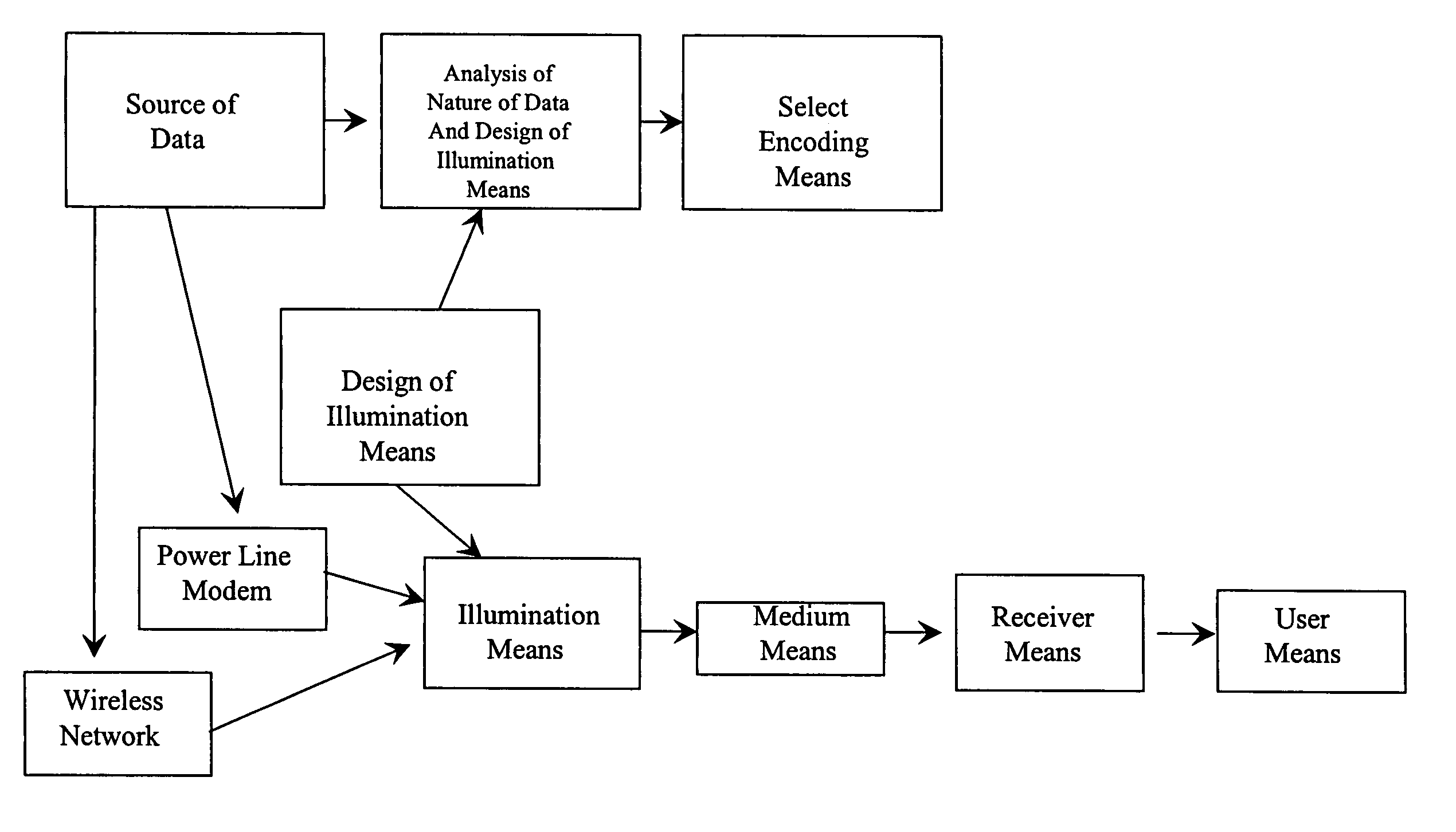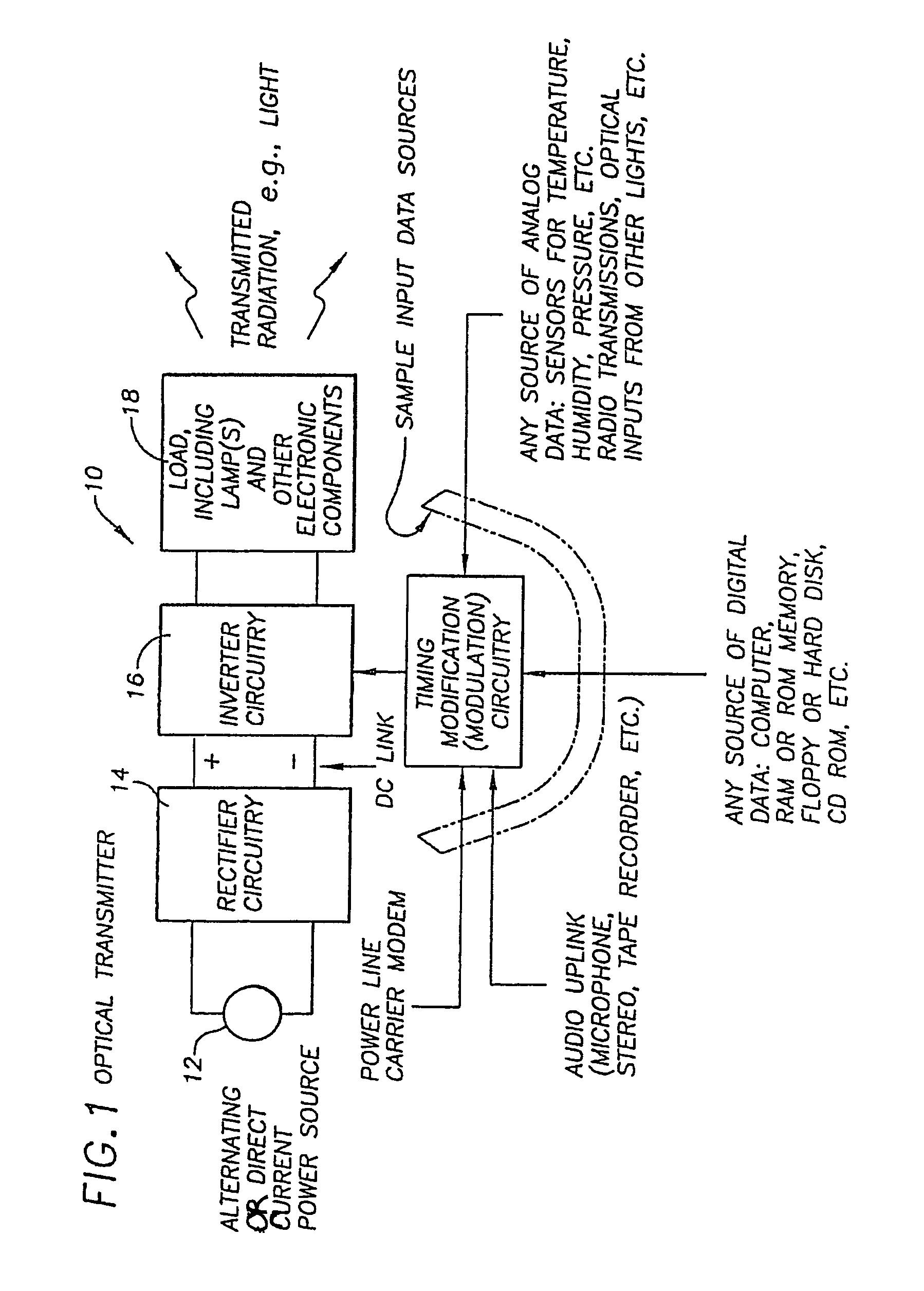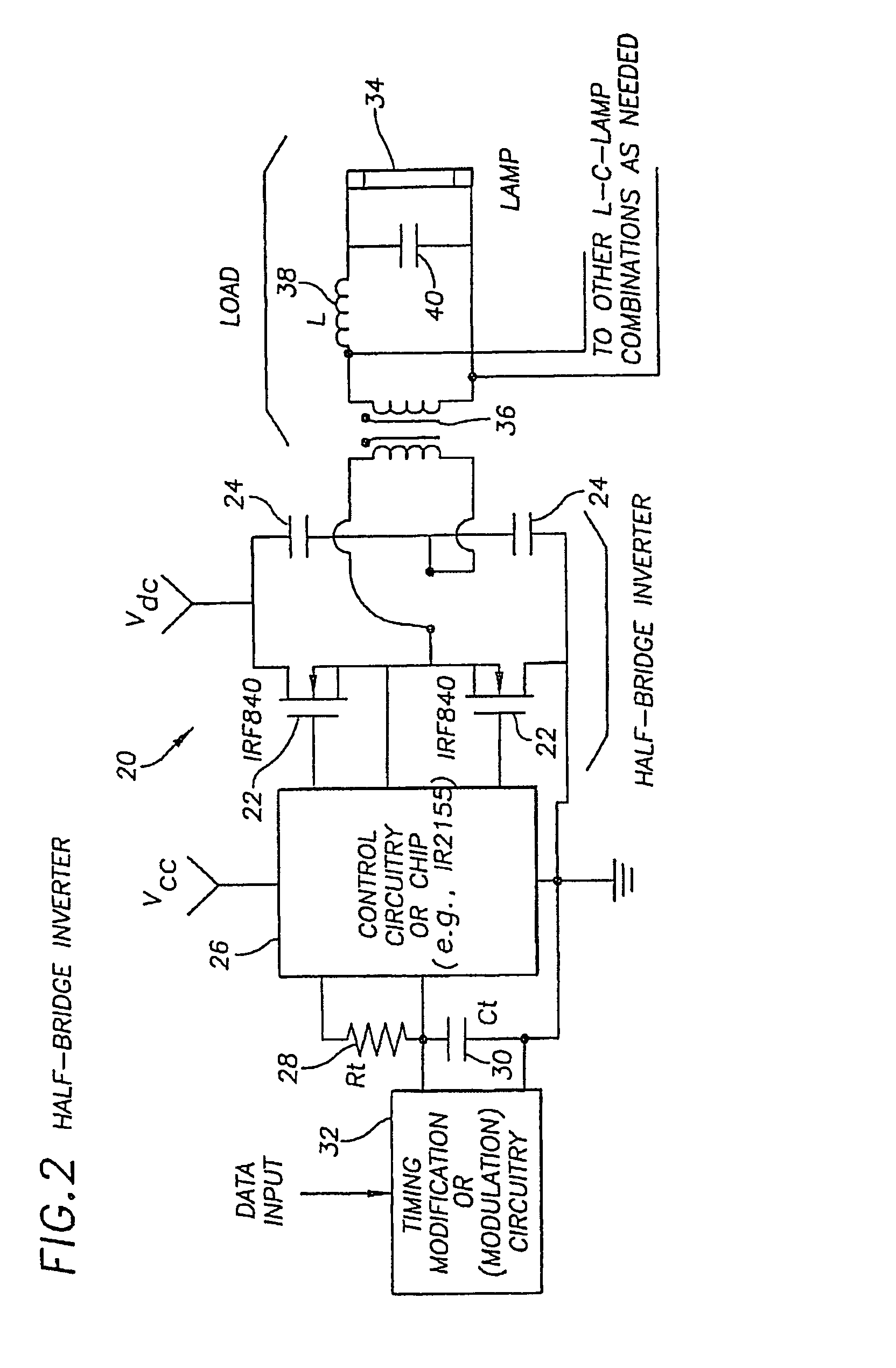Communication with non-flickering illumination
a technology of communication and illumination, applied in the field of communication with non-flickering illumination, can solve the problems of control codes and start codes, too, and achieve the effect of maximizing efficiency
- Summary
- Abstract
- Description
- Claims
- Application Information
AI Technical Summary
Benefits of technology
Problems solved by technology
Method used
Image
Examples
Embodiment Construction
[0085]The present invention transmits information over a free space optical data pathway. Transmission is accomplished by modulating or varying the frequency of the alternating current in an electric discharge lamp such as a fluorescent lamp. A typical discharge lamp requires a relatively high starting or striking voltage across it's terminals to form an arc or electric discharge in the lamp. Once the arc forms, it is essential to reduce the voltage across the lamp, lest an excessive current flow through the lit lamp, destroying it. The purpose of an electronic lamp ballast is at least two-fold, therefore. The ballast must provide an adequately high voltage to initiate arc formation and light production. After starting, the ballast serves to limit the current through the lamp, ensuring satisfactory light production and long lamp life. The present invention adds a third function to the ballast. A means is provided to vary the frequency of the lamp current to encode information for tr...
PUM
 Login to View More
Login to View More Abstract
Description
Claims
Application Information
 Login to View More
Login to View More - R&D
- Intellectual Property
- Life Sciences
- Materials
- Tech Scout
- Unparalleled Data Quality
- Higher Quality Content
- 60% Fewer Hallucinations
Browse by: Latest US Patents, China's latest patents, Technical Efficacy Thesaurus, Application Domain, Technology Topic, Popular Technical Reports.
© 2025 PatSnap. All rights reserved.Legal|Privacy policy|Modern Slavery Act Transparency Statement|Sitemap|About US| Contact US: help@patsnap.com



